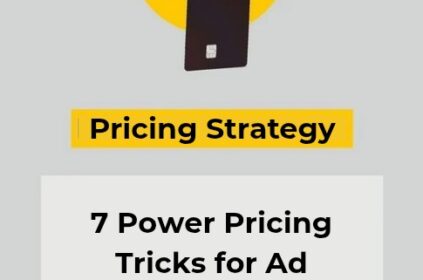Have you ever meticulously crafted a Facebook ad campaign, only to feel like it’s reaching an audience that just isn’t receptive? Identifying and connecting with the ideal customer base is crucial for Facebook campaign effectiveness.
Traditional targeting methods can provide a solid foundation, but Facebook Lookalike Audiences offer a sophisticated tool to amplify your reach and forge connections with highly promising customers who share the characteristics of your existing valuable audience.
This comprehensive guide delves into the intricacies of Lookalike Audiences, empowering you to leverage this advanced targeting strategy to its fullest potential.
We’ll explore the mechanics behind Lookalike Audiences, provide a step-by-step guide to their creation, and equip you with effective strategies to maximize their impact across your Facebook advertising campaigns. So, prepare to unlock the secrets of reaching new audiences and propel your Facebook advertising efforts to new heights.
What are Facebook Lookalike Audiences and How Can They Benefit Your Campaigns?
At its core, a Facebook Lookalike Audience is a powerful targeting tool that utilizes your existing customer data to identify entirely new audiences with similar characteristics. Imagine having the ability to replicate your most engaged website visitors, loyal customers, or even high-value app users – that’s the magic behind Lookalike Audiences.
Here’s how Lookalike Audiences can significantly benefit your Facebook advertising efforts, with a deeper dive into five additional advantages:
#1. Expand Your Reach: Go beyond your existing audience and connect with a broader pool of potential customers who exhibit similar interests and behaviors. This allows you to efficiently tap into new markets with a higher likelihood of conversion.
For instance, let us say you sell athletic wear. By creating a Lookalike Audience based on your existing customer list, you can reach new individuals who share similar demographics, purchase history, and online behavior patterns with your current clientele.
This expands your reach beyond those who already know your brand and opens doors to potential customers who might be interested in your products but haven’t yet discovered them.
#2. Enhanced Targeting Precision: Lookalike Audiences transcend basic demographics. By leveraging your customer data, Facebook’s sophisticated algorithms identify individuals with deeper similarities that traditional targeting methods might miss. This translates to more relevant ad placements for a more receptive audience.
For example, imagine you run a travel agency specializing in adventure tours. While basic demographic targeting might focus on age and location, a Facebook Lookalike Audience based on your existing customer list could identify individuals with a history of booking outdoor adventure trips, exhibiting a strong interest in travel blogs featuring similar destinations, or even following social media influencers known for their adventurous lifestyles.
This level of granular targeting ensures your ads are reaching a highly relevant audience who are already predisposed to activities aligned with your offerings.
#3. Increased Conversion Rates: By targeting individuals who mirror your existing high-value customers, you’re inherently connecting with a pre-disposed audience more receptive to your message. This significantly increases the probability of conversions, such as website purchases, app downloads, or lead generation.
For example, an e-commerce store selling handcrafted jewelry could create a Lookalike Audience based on their most frequent customers. This audience would likely contain individuals who appreciate unique pieces, have a history of online shopping, and demonstrate a willingness to spend on quality artisanal products.
By targeting this pre-qualified audience, the jewelry store significantly increases the chances of their ads converting into website sales.
#4. Improved Return on Ad Spend (ROAS): Reaching a more targeted audience translates to reduced ad waste. Lookalike Audiences allow you to focus your budget on individuals with a demonstrably higher propensity to convert, ultimately maximizing your return on ad investment.
Let us say you are a fitness instructor offering online workout programs. Traditional targeting methods might involve casting a wide net based on demographics and interests related to fitness.
However, a Lookalike Audience based on your existing subscribers who consistently engage with your content and have purchased previous programs allows you to target a much warmer audience with a proven track record of investment in your services. This targeted approach minimizes wasted ad spend and maximizes the return on your advertising dollars.
#5. Unlock New Customer Segments: Lookalike Audiences can help you discover entirely new customer segments you might not have previously considered. By analyzing your existing audience data, Facebook might reveal hidden patterns and demographics that open doors to untapped markets with high growth potential.
Imagine you manage a cooking blog with a loyal following. A Lookalike Audience based on your audience might unveil a previously unknown segment with a strong interest in organic gardening, even though your content doesn’t directly focus on that topic.
This discovery could lead to exploring new recipe content featuring homegrown ingredients or even potential collaborations with gardening influencers, ultimately expanding your reach and attracting a new audience segment.
Beyond these core benefits, Lookalike Audiences offer additional advantages that enhance your overall campaign effectiveness:
#6. Reduced Audience Fatigue: By targeting a broader audience with similar characteristics, you can lessen the ad fatigue that can occur when repeatedly targeting the same narrow group. This allows you to maintain consistent brand messaging without overwhelming your existing audience with the same ads.
Imagine you run a bakery with a popular rewards program. While you might want to target your existing customers with exclusive promotions, constantly showing them the same ads can lead to them becoming desensitized to your message. A Facebook Lookalike Audience based on your rewards program members allows you to showcase your brand to a wider audience with similar interests, keeping your brand fresh in everyone’s mind.
#7. Scalability and Efficiency: Lookalike Audiences are incredibly scalable. As you acquire more customer data, your Facebook Lookalike Audiences can grow alongside your business efficiently reaching a wider range of potential customers without needing to constantly redefine targeting parameters.
For instance, you are managing a language learning app. Initially, your Facebook Lookalike Audience might be based on your early adopters. As your app gains traction and you acquire more user data, your Lookalike Audience can expand to encompass individuals with similar learning styles, preferred languages, or educational backgrounds. This allows you to scale your campaigns efficiently and target a broader audience as your business grows.
#8. Retargeting Power: Facebook Lookalike Audiences can be incredibly effective for retargeting campaigns. By creating a Lookalike Audience based on website visitors who abandoned their carts, for example, you can recapture their attention with targeted ads reminding them of the products they left behind.
For example, an online furniture store can leverage Lookalike Audiences to retarget website visitors who expressed interest in a specific couch but didn’t complete the purchase.
By showcasing targeted ads featuring the same couch or highlighting special promotions, the furniture store can remind potential customers about their interest and nudge them towards conversion.
#9. Testing and Optimization: Lookalike Audiences provide a valuable testing ground for exploring different ad creatives and messaging approaches. By segmenting your Lookalike Audience into smaller groups, you can test various ad variations and identify which resonate most effectively with your target market.
Imagine you’re a sports apparel brand. A Lookalike Audience based on your existing customers can be further segmented into subgroups based on preferred sports or demographics.
This allows you to test different ad creatives showcasing specific athletic wear lines or messaging tailored to each subgroup’s interests. By analyzing the results, you can identify the most effective ad variations and optimize your campaigns for maximum impact.
#10. Multi-Platform Targeting: Lookalike Audiences aren’t restricted to Facebook alone. You can leverage them across the entire Meta suite of platforms, including Instagram, allowing you to reach your target audience wherever they engage online.
For instance, a yoga studio can create a Lookalike Audience based on their existing class attendees. They can then utilize this audience to target individuals on both Facebook and Instagram with ads promoting upcoming workshops or special events, maximizing their reach and potential for attracting new students.
In essence, Facebook Lookalike Audiences empower you to target a broader audience with laser precision, fostering higher engagement, boosting conversions, and ultimately propelling your Facebook advertising campaigns towards unparalleled success.
By leveraging the diverse benefits outlined above, you can unlock the true potential of this powerful targeting tool and craft advertising strategies that drive exceptional results.
What is the Difference Between Facebook Lookalike Audiences and Custom Audiences?
While both Custom Audiences and Lookalike Audiences play a crucial role in Facebook advertising, they serve distinct purposes within your targeting strategy. Here’s a breakdown to help you understand the key differences:
Custom Audiences:
Custom Audiences are meticulously crafted groups of people you already have a connection with. This connection can be established through various methods, including:
1. Uploading customer email lists or phone numbers
2. Website traffic data collected via Facebook Pixel
3. Engagement on your Facebook page (likes, comments, shares)
4. App activity from your mobile app
Targeting Potential: Custom Audiences allow you to directly target individuals who have already interacted with your brand in some way. This could be website visitors who browsed specific product categories, existing customers who have made purchases, or engaged followers on your Facebook page.
Benefits:
#1. Remarketing: Custom Audiences are ideal for retargeting campaigns. Reconnect with website visitors who abandoned their carts or remind past customers about new products or promotions.
#2. Brand Advocacy: Target existing customers with loyalty programs or special offers to nurture brand loyalty and encourage repeat business.
#3. Highly Relevant Targeting: Since you’re targeting individuals who have already demonstrated interest, Custom Audiences offer a high degree of relevance, increasing the likelihood of ad engagement.
Lookalike Audiences:
Lookalike Audiences leverage the power of your existing customer data to reach entirely new audiences. Facebook analyzes the characteristics and behaviors of your chosen source audience (typically a Custom Audience) and identifies new individuals on the platform who share similar traits.
Targeting Potential: Lookalike Audiences allow you to expand your reach beyond your current audience base. By targeting individuals similar to your high-value customers, you tap into a new pool of potential leads or buyers with a strong likelihood of conversion.
Benefits:
#1. Audience Expansion: Reach new prospects with similar characteristics to your existing customer base, significantly increasing your potential reach.
#2. Enhanced Targeting Precision: Lookalike Audiences go beyond basic demographics. They identify individuals with deeper similarities in online behavior and interests, leading to more effective targeting.
#3. Discovery of New Markets: Lookalike Audiences can reveal hidden patterns within your data, uncovering entirely new customer segments with high growth potential.
In essence, custom audiences involvetargeting existing connections who have already interacted with your brand in some way.
On the other hand, lookalike audiences involveexpanding your reach by targeting new individuals similar to your existing high-value customers.
Choosing the Right Audience:
The optimal audience selection depends on your campaign goals:
#1. Brand awareness or retargeting: Utilize Facebook Custom Audiences to reconnect with existing audiences.
#2. Reaching new potential customers: Leverage Facebook Lookalike Audiences to expand your reach and acquire new leads or customers.
By understanding the distinct functionalities of Fa Custom Audiences and Lookalike Audiences, you can craft a comprehensive targeting strategy that maximizes the effectiveness of your Facebook advertising campaigns.
When Should I Use Facebook Lookalike Audiences?
Facebook Lookalike Audiences shine brightest in specific campaign scenarios where you aim to expand your reach and acquire new customers with a high likelihood of conversion. Here are some prime situations to leverage Facebook Lookalike Audiences:
#1. Growing Your Customer Base: If your goal is to attract new potential customers, Facebook Lookalike Audiences are an invaluable tool. By targeting individuals similar to your existing high-value audience, you’re essentially reaching a pre-qualified pool of prospects who share similar interests, behaviors, and a propensity to convert.
#2. Brand Awareness Campaigns (Expanding Reach): While Custom Audiences are effective for retargeting existing audiences familiar with your brand, Facebook Lookalike Audiences can help amplify your brand awareness efforts. By targeting a broader audience with characteristics mirroring your current customer base, you can introduce your brand to a new pool of individuals who might be receptive to your offerings.
#3. Website Traffic with Purchase Intent: Have you implemented a Facebook Pixel on your website and gathered valuable data on website visitors who haven’t converted yet? Facebook Lookalike Audiences can be immensely effective in re-engaging these website visitors.
Since the audience is built on website traffic data, you can target individuals who have already shown interest in your products or services, increasing the chances of them returning to your website and completing a desired action.
#3. Promoting New Products or Services: Launching a new product or service? Facebook Lookalike Audiences can help you target individuals with a proven track record of purchasing from you or demonstrating interest in similar products within your existing catalog. This allows you to generate initial buzz and excitement for your new offerings amongst a pre-disposed audience.
#4. Re-Engaging Dormant Customers: Do you have a customer list with individuals who haven’t interacted with your brand in a while? Consider creating a Facebook Lookalike Audience based on your active customers. This allows you to target new individuals similar to your recently engaged clientele, potentially rekindling interest in your brand amongst those who might have fallen off the radar.
In a nutshell, consider Facebook Lookalike Audiences whenever you want to:
- Reach new, high-potential customers who resemble your existing valuable audience.
- Expand your brand awareness beyond your current audience base.
- Re-engage website visitors who haven’t converted yet.
- Promote new offerings to a pre-disposed audience.
- Win back dormant customers who haven’t interacted with your brand recently.
Remember, Facebook Lookalike Audiences are most effective when you have a high-quality source audience to build upon. The more data you have on your existing customers or website visitors, the more precise and effective your Lookalike Audience will be.
So, leverage Lookalike Audiences strategically within your Facebook advertising toolbox, and watch your campaigns reach new heights in terms of customer acquisition and overall campaign success.
Creating a Lookalike Audience: A Step-by-Step Guide
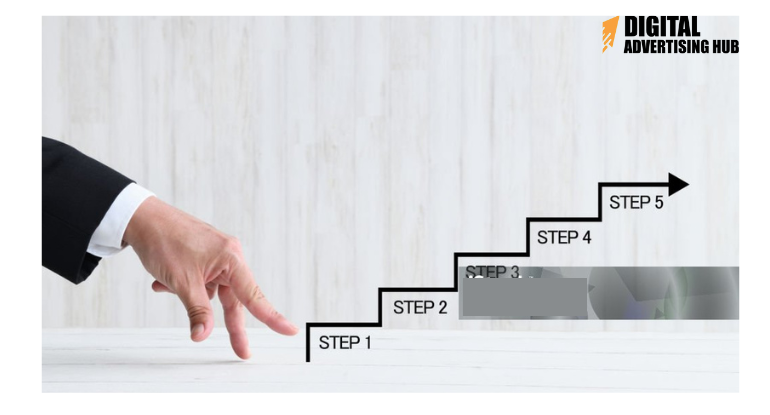
Now that you’ve grasped the power of Lookalike Audiences, let’s equip you with the practical steps to create your own within Facebook Ads Manager. Follow along to unlock the targeting potential of this valuable tool:
#1. Navigate to Audiences: Within Facebook Ads Manager, locate the “Audiences” tab from the main navigation menu. This section serves as your mission control center for managing all your targeting options for your advertising campaigns. Think of it as your digital headquarters for crafting the precise audience you want your ads to reach.
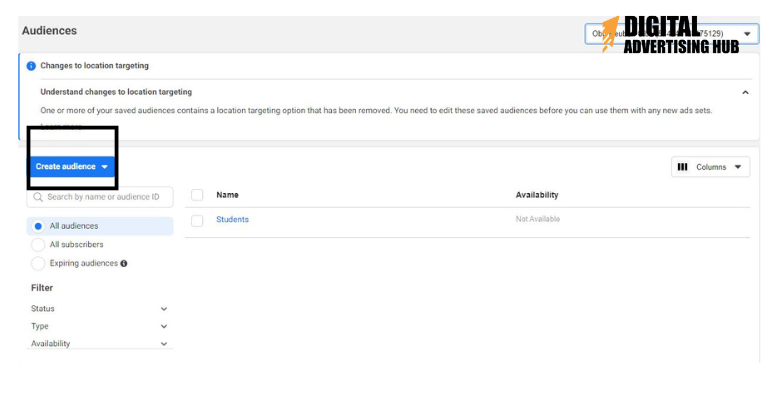
#2. Create Audience: Click the button labeled “Create Audience” and a dropdown menu will appear. From there, select “Lookalike Audience.” This initiates the process of building your very own Lookalike Audience, a targeted group that mirrors the characteristics of your existing valuable customers.
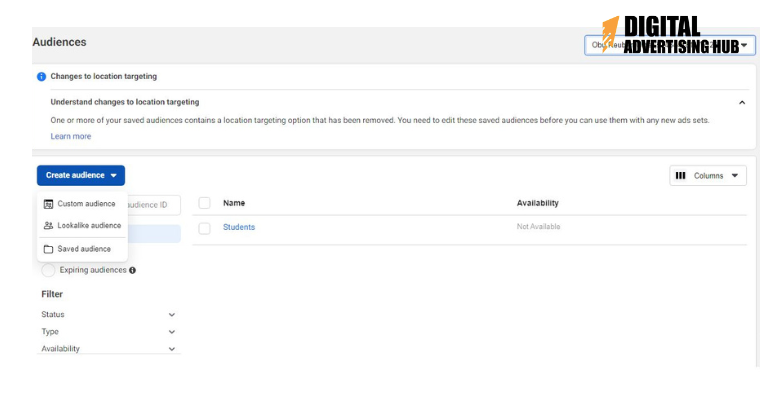
#3. Choose Your Source Audience: This selection serves as the cornerstone of your Lookalike Audience. It’s the wellspring from which Facebook gathers data to identify similar individuals. Carefully consider which source audience best aligns with your campaign goals. Here are some common options to choose from:
#4. Customer List: If you have a compiled list of customer email addresses or phone numbers, you can upload it here. This is a powerful option for leveraging your existing customer data to reach new individuals who share similar demographics and purchase behaviors.
#5. Website Traffic: Have you installed a Facebook pixel on your website? If so, you can leverage the wealth of data it collects on website visitors. This option allows you to create a Lookalike Audience based on individuals who have interacted with specific pages, browsed product categories, or even abandoned their shopping carts.
By targeting individuals who have already expressed interest in your offerings, you significantly increase the conversion potential of your campaigns.
#6. Engagement on Facebook Page: Perhaps you’ve cultivated a thriving community around your Facebook page. This source audience option allows you to target individuals who have actively engaged with your content, such as liking your posts, commenting on discussions, or sharing your content with their network.
By creating a Lookalike Audience based on these engaged followers, you can expand your reach to individuals who have already demonstrated an affinity for your brand.
#7. App Activity: Do you have a mobile app that boasts a loyal user base? This source audience option empowers you to create a Lookalike Audience based on your existing app users.
By targeting individuals who have interacted with your app’s features or made in-app purchases, you can reach new users with similar app usage patterns and interests, maximizing the potential for app downloads and user engagement.
#8. Choosing the Right Source Audience: The optimal source audience selection depends on your specific goals. For brand awareness campaigns, website traffic or Facebook page engagement might be suitable choices. However, if your objective is driving website purchases, a customer list or website traffic source audience with conversion data might be more effective.
#9. Define Your Lookalike Audience Size: Here’s where you control the scope of your Lookalike Audience. Facebook allows you to specify the size of the audience you wish to create. Think of it as a dial that controls the level of similarity between your Lookalike Audience and your source audience.
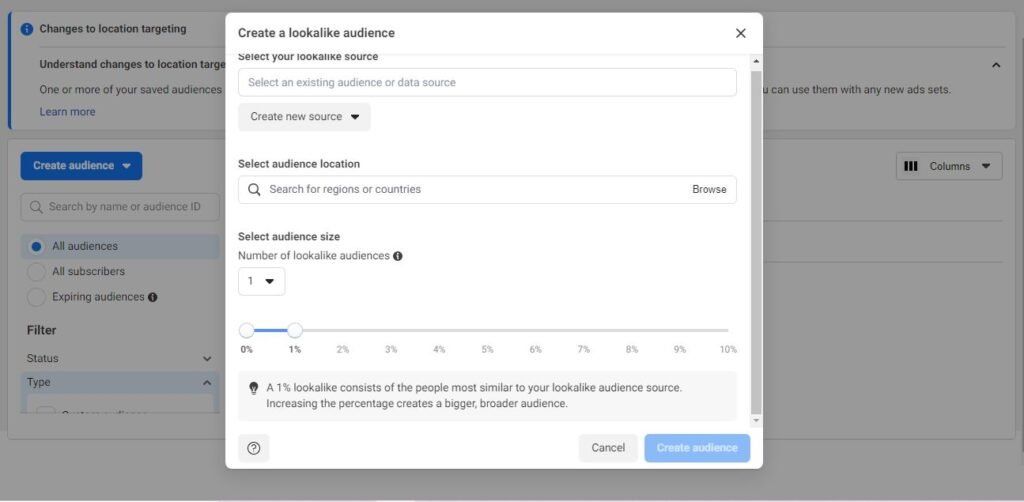
- 1% Lookalike Audience: This option represents the closest resemblance to your source audience. It targets individuals who share the most characteristics with your chosen source, offering the highest level of precision but also the smallest audience size.
- 3% Lookalike Audience: This selection expands the net slightly, targeting individuals with a high degree of similarity to your source audience while encompassing a larger pool of potential customers.
- 10% Lookalike Audience: This option casts the widest net, identifying individuals with broader shared characteristics with your source audience. While the level of precision might be slightly lower, it offers the benefit of reaching a significantly larger audience with potential for conversion.
When selecting your Facebook Lookalike Audience size, consider the size of your source audience. For smaller source audiences, a 1% or 3% option might be optimal. However, with larger source audiences, a 10% Lookalike Audience can still deliver a high degree of precision while reaching a substantial number of potential customers.
#10. Target Location: This step allows you to define the geographical locations where you want your Facebook Lookalike Audience to reside. By selecting specific countries or regions, you can tailor your campaign reach to your target market, ensuring your ads are displayed to individuals within the designated areas. This is particularly crucial for businesses with a localized presence or those offering products or services with regional restrictions.
By following these detailed steps, you’ll successfully create a Facebook Lookalike Audience within Facebook Ads Manager. The next section will delve into how to effectively leverage these audiences
Unleashing the Power: Using Lookalike Audiences in Your Campaigns
Now that you’ve mastered the art of creating Lookalike Audiences, let’s explore how to strategically integrate them into your Facebook advertising campaigns and unlock their full potential:
#1. Campaign Objective Alignment:
The first step is aligning your Lookalike Audience with the specific goals of your advertising campaign. Here are some effective pairings:
1. Brand Awareness: Lookalike Audiences based on website traffic or Facebook page engagement can help raise awareness of your brand amongst individuals who exhibit similar interests and online behavior patterns as your existing audience.
2. Website Traffic: Targeting Lookalike Audiences derived from website visitors who haven’t converted yet can reignite their interest and drive them back to your website to explore your offerings further.
3. Conversions (Purchases, App Downloads, Lead Generation): Lookalike Audiences based on your most valuable customers (e.g., customer list with purchase history) or highly engaged app users can significantly boost conversion rates. These audiences represent individuals pre-disposed to your products or services, making them prime targets for conversion-oriented campaigns.
#2. Leveraging Multiple Lookalike Audiences:
Don’t limit yourself to a single Lookalike Audience. The beauty lies in their versatility. Consider creating multiple Lookalike Audiences based on different source audiences or varying size percentages. This allows you to test and refine your targeting for optimal results.
Example: You can create a Lookalike Audience based on your website visitors who abandoned their carts (high purchase intent) and another Lookalike Audience based on your Facebook page followers (broad brand awareness).
By running separate ad campaigns targeting each audience with tailored messaging, you can cater to different stages of the buyer’s journey, maximizing the effectiveness of your advertising efforts.
#3. Combining Lookalike Audiences with Other Targeting Options:
Lookalike Audiences are incredibly powerful, but their effectiveness can be further amplified by combining them with other targeting options within Facebook Ads Manager. Here are some strategic combinations to consider:
1. Demographics & Interests: Refine your Lookalike Audience reach by layering on additional targeting parameters such as age, location, or interests. This allows you to hone in on a very specific audience segment within your Lookalike pool.
2. Custom Audiences: For even greater precision, consider combining your Lookalike Audience with a Custom Audience derived from website visitors who have viewed specific product categories. This hyper-targeted approach allows you to showcase highly relevant ads to individuals with a demonstrably strong interest in your offerings.
#4. A/B Testing for Optimization:
Don’t settle for assumptions! The world of advertising thrives on data-driven insights. Utilize Facebook’s A/B testing features to experiment with different Lookalike Audience variations, ad creatives, and messaging approaches.
By analyzing the results, you can identify the most successful combinations that resonate best with your target audience, ultimately optimizing your campaigns for superior performance.
By following these strategic steps, you’ll transform Lookalike Audiences from a mere targeting tool into a powerful weapon in your Facebook advertising arsenal. In the next section, we’ll explore how to measure the success of your Lookalike Audience campaigns and ensure you’re maximizing your return on investment.
Measuring Success: Tracking and Analyzing Your Lookalike Audience Campaigns
The true power of Lookalike Audiences lies not just in their creation, but in your ability to measure and analyze their performance. By tracking key metrics and interpreting the data effectively, you can optimize your campaigns for maximum impact and ensure you’re reaping the rewards of your advertising efforts. Here’s what to focus on:
Core Metrics to Monitor:
#1. Reach: This metric reveals the total number of unique individuals who saw your ad within your Lookalike audience. While a high reach is desirable, it doesn’t guarantee success. Look for a balance between reach and other metrics for a more holistic picture.
#2. Click-Through Rate (CTR): This metric indicates the percentage of individuals within your Lookalike Audience who clicked on your ad. A higher CTR suggests your ad resonated with your audience and enticed them to learn more.
#3. Conversion Rate: This metric represents the ultimate goal – the percentage of individuals who took a desired action after clicking on your ad, such as making a purchase, downloading your app, or submitting a lead form. Optimizing your Lookalike Audiences should aim to drive up this metric.
#4. Cost per Acquisition (CPA): This metric reveals the average cost associated with acquiring a new customer through your Lookalike Audience campaigns. By analyzing your CPA alongside your conversion rate, you can gauge the efficiency of your advertising spend.
Analyzing Results and Optimizing Performance:

Once you’ve accumulated campaign data, it’s time to delve into the analysis.
#1. Identify Trends: Look for patterns within your metrics. Are specific Lookalike Audiences performing better than others? Are certain ad creatives resonating more with your target market? By identifying these trends, you can refine your approach and allocate resources more effectively.
#2. A/B Testing Insights: Remember those A/B tests you implemented? Now’s the time to analyze the results. See which Lookalike Audience variations, ad creatives, or messaging approaches yielded the best results. Refine your campaigns based on these learnings for continuous improvement.
#3. Lookalike Audience Refinement: Based on your analysis, consider refining your Lookalike Audiences. Perhaps a different source audience or a smaller size percentage might be more effective. Don’t be afraid to experiment and adjust your Lookalike Audiences based on your data insights.
Beyond Core Metrics:
While core metrics provide a solid foundation, consider these additional factors for a comprehensive analysis:
#1. Engagement: Look beyond clicks and conversions. Did your ads generate comments, shares, or other forms of engagement on your Facebook page? High engagement suggests your message resonates with your Lookalike Audience.
#2. Brand Recall: Consider conducting surveys or A/B testing variations that include a brand recall component. This can help you gauge the effectiveness of your Lookalike Audience campaigns in terms of brand awareness and memorability.
By incorporating these measurement and analysis practices, you’ll gain a deeper understanding of how your Lookalike Audience campaigns perform. This data-driven approach empowers you to continuously optimize your targeting, messaging, and overall advertising strategy, ensuring your Lookalike Audiences deliver exceptional results and propel your Facebook advertising efforts to new heights.
The final section of this guide will explore some best practices and pro tips to help you elevate your Lookalike Audience mastery to the next level.
Lookalike Audience Mastery: Pro Tips and Best Practices
Having equipped you with a comprehensive understanding of Lookalike Audiences, let’s delve into some best practices and pro tips to elevate your targeting prowess and unlock their full potential within your Facebook advertising campaigns.
Elevate Your Source Audience:
#1. Quality Over Quantity: While a larger source audience might seem appealing, prioritize quality over sheer numbers. Ensure your source audience data is accurate and represents individuals who genuinely align with your ideal customer profile. A smaller, high-quality source audience can yield a more precise and effective Lookalike Audience.
#2. Combine Source Audiences (For Advanced Users): Consider creating Lookalike Audiences based on a combination of multiple source audiences. For instance, you could combine website visitors who abandoned their carts with website visitors who viewed specific product categories. This approach refines your targeting even further, reaching individuals exhibiting a stronger purchase intent.
Refine Your Lookalike Audience Parameters:
#1. Experiment with Audience Sizes: Don’t be afraid to test different Lookalike Audience size percentages. While a 1% audience offers the highest precision, a 3% or even a 10% audience can still deliver significant results while reaching a broader pool of potential customers.
#2. Target Multiple Locations (if applicable): If your business operates in various regions, consider creating separate Lookalike Audiences for each target location. This allows you to tailor your messaging and ad creatives to resonate with cultural nuances and regional preferences.
Campaign Optimization Strategies:
#1. Utilize Dynamic Ads: Take advantage of Facebook’s dynamic ad capabilities. This allows you to showcase personalized product recommendations based on an individual’s browsing behavior within your Lookalike Audience. Dynamic ads enhance relevance and significantly boost conversion rates.
#2. Retargeting Power: Lookalike Audiences are incredibly effective for retargeting campaigns. Reach out to website visitors who abandoned their carts or app users who haven’t logged in recently with targeted ads reminding them of your offerings and enticing them to complete the desired action.
#3. Lookalike Audience Exclusion: Sometimes, excluding certain segments from your Lookalike Audience can be highly beneficial. For instance, you might exclude existing customers from a Lookalike Audience targeting website visitors for brand awareness purposes. This ensures you’re not showing ads to those already familiar with your brand.
Embrace Continuous Learning:
#1. Stay Informed: The world of Facebook advertising is constantly evolving. Stay updated on the latest Lookalike Audience features, targeting options, and best practices. This ensures you’re leveraging the platform’s full potential.
#2. Test, Analyze, and Adapt: Don’t settle for assumptions. Continuously test different variations of your Lookalike Audiences, ad creatives, and messaging approaches. Analyze the data and adapt your campaigns based on your findings. A data-driven approach is the key to unlocking the true power of Lookalike Audiences.
By following these best practices and pro tips, you’ll transform from a Lookalike Audience novice to a master of targeted advertising. Remember, Lookalike Audiences are a powerful tool, but their effectiveness hinges on your ability to implement them strategically and refine them based on ongoing data analysis. Embrace experimentation, prioritize quality data, and continuously optimize your approach –– and watch your Facebook advertising campaigns soar to new heights!
7 Common Errors to Avoid When Using Facebook Lookalike Audiences
While Lookalike Audiences offer immense potential for expanding your reach and acquiring new customers, there are pitfalls to avoid to ensure their effectiveness. Here are 7 common mistakes to steer clear of:
#1. Poor Source Audience Selection: The cornerstone of a successful Lookalike Audience lies in your source audience. Avoid using source audiences with insufficient data (ideally under 100 individuals) or those that don’t accurately represent your ideal customer profile. Focus on high-quality source audiences like website visitors who abandoned carts (high purchase intent) or engaged Facebook page followers.
#2. Limited Source Audience Size: A source audience that’s too small can restrict the effectiveness of your Lookalike Audience. While a 1% Lookalike Audience offers high precision, consider testing variations with a 3% or even a 10% audience size to reach a broader pool of potential customers with similar characteristics.
#3. Neglecting Audience Overlap: Before launching your Lookalike Audience campaign, check for overlap with existing Custom Audiences you might be targeting. This ensures you’re not showing ads to the same individuals multiple times, maximizing the efficiency of your ad spend.
#4. Ignoring Campaign Objective Alignment: Align your Lookalike Audience with your specific campaign goals. For brand awareness, target website visitors or Facebook page followers. For conversions, leverage Lookalike Audiences based on your high-value customers or engaged app users. Misaligned targeting can lead to subpar results.
#5. Failing to Test and Optimize: Don’t settle for a single Lookalike Audience or ad creative. Experiment with different audience sizes, source audience variations, and messaging approaches. Utilize Facebook’s A/B testing features to identify the most successful combinations that resonate best with your target audience.
#6. Underutilizing Additional Targeting Options: Lookalike Audiences are powerful, but their effectiveness can be amplified by layering on additional targeting parameters within Facebook Ads Manager. Consider demographics, interests, or website visitor behavior to further refine your reach and target a very specific audience segment within your Lookalike pool.
#7. Forgetting to Monitor and Analyze Results: The true power of Facebook Lookalike Audiences lies in your ability to measure and analyze their performance. Track core metrics like reach, click-through rate, conversion rate, and cost per acquisition. Analyze the data to identify trends, refine your audience parameters, and optimize your campaigns for continuous improvement.
By avoiding these common errors and following best practices, you can transform Lookalike Audiences from a basic targeting tool into a potent weapon within your Facebook advertising arsenal. Remember, data is king. Prioritize high-quality source audiences, experiment strategically, and constantly analyze your results to unlock the true potential of Lookalike Audiences and propel your Facebook advertising efforts towards exceptional outcomes.
Conclusion
In closing, Facebook Lookalike Audiences have emerged as a game-changer in the realm of social media advertising. Their ability to target individuals with characteristics mirroring your existing high-value customers unlocks a treasure trove of potential. By leveraging Lookalike Audiences, you can:
1. Expand Your Reach: Go beyond your current audience and connect with a broader pool of individuals predisposed to your offerings.
2. Enhance Targeting Precision: Lookalike Audiences transcend basic demographics, identifying individuals with deeper similarities that resonate more effectively.
3. Boost Conversion Rates: By targeting individuals with a proven propensity to convert, you significantly increase the likelihood of achieving your campaign goals.
4. Maximize Return on Ad Spend: Lookalike Audiences allow you to focus your budget on a pre-qualified audience, minimizing wasted ad spend and maximizing your return on investment.
5. Unlock New Customer Segments: Lookalike Audiences can reveal hidden patterns within your customer data, leading to the discovery of entirely new market segments with high growth potential.
By incorporating the strategies and best practices outlined in this guide, you can harness the true power of Lookalike Audiences and elevate your Facebook advertising campaigns to new levels of success. Remember, the key lies in:
1. Selecting the Right Source Audience: Choose an audience that aligns with your campaign goals and ensure the data is high-quality and representative of your ideal customer.
2. Crafting Effective Lookalike Audiences: Experiment with different audience sizes, target locations, and consider combining source audiences for advanced targeting.
3. Optimizing Your Campaigns: Utilize dynamic ads, retargeting strategies, and lookalike audience exclusions to further refine your reach and messaging.
4. Embracing Continuous Learning: Stay updated on the latest Lookalike Audience features, testing strategies, and data analysis techniques.
Lookalike Audiences are a powerful tool at your disposal. By wielding them strategically and adapting your approach based on ongoing analysis, you can unlock a world of possibilities within your Facebook advertising endeavors. So, take the leap, embrace the potential of Lookalike Audiences, and watch your brand awareness, conversions, and overall advertising ROI skyrocket.


